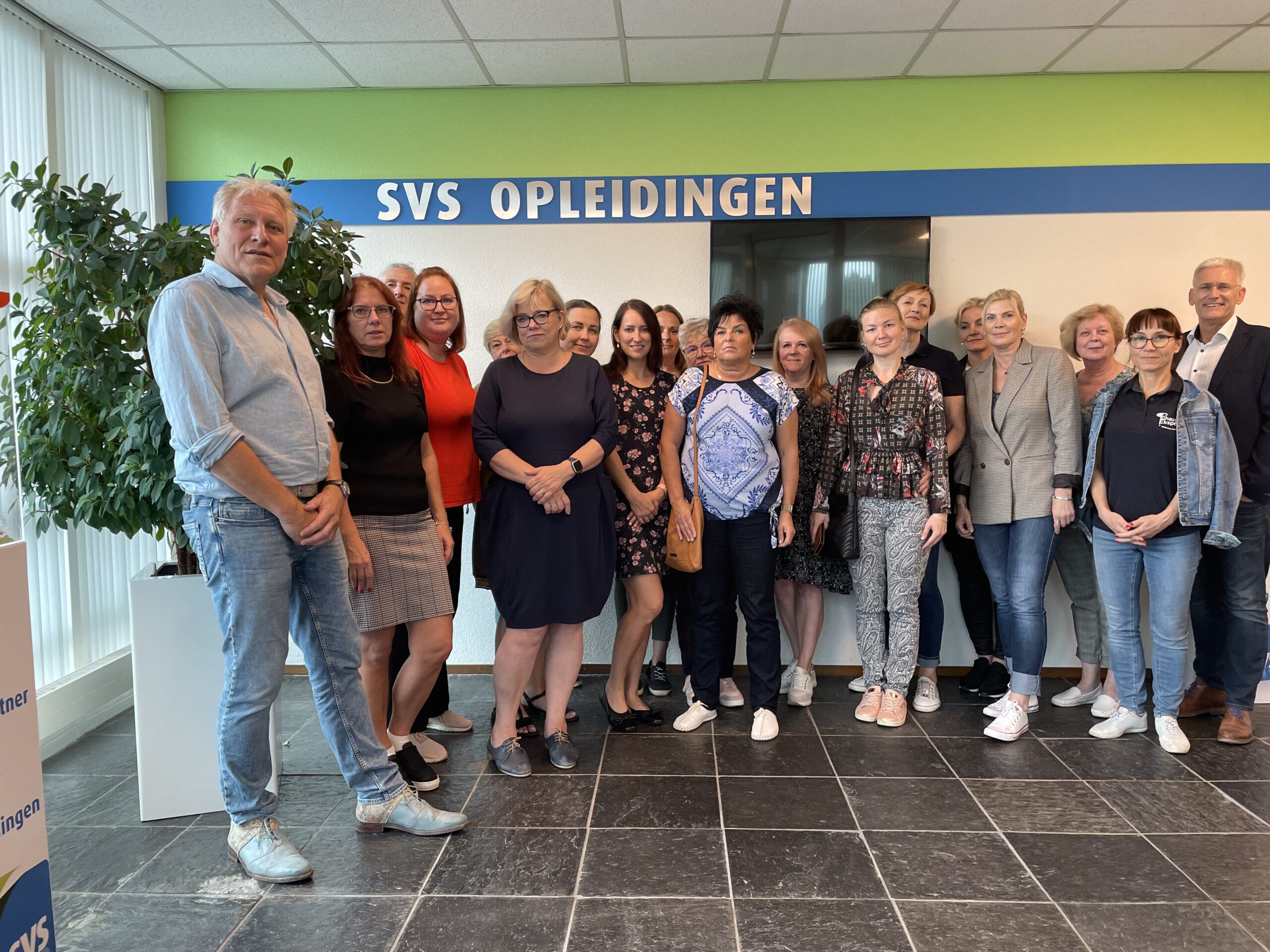info@puhastusekspert.ee +372 5611 1048
Study Trip to the Netherlands August 28–31, 2023
In the last week of August, an Erasmus+ study trip to the Netherlands took place, led by Puhastusekspert. The study trip was attended by representatives of consortium members SA Tartu University Hospital, AS Rakvere Hospital, SA North Estonia Medical Centre, Valga Hospital AS, OÜ SOL Baltics, Arkaadia Puhastuse OÜ, P.Dussmann OÜ, and Puhastusekspert OÜ, totaling 17 people.
The trainers in the Netherlands were Kristel Rietveldt from Gouda Hospital and Jaap Niezen from SVS.
One of the main objectives of the study trip was to learn from the Dutch experience on whether and how it is possible to ensure sufficient cleanliness and patient safety in a hospital environment by using water-moistened microfiber cloths and mops for cleaning.
The trainers in the Netherlands were Kristel Rietveldt from Gouda Hospital and Jaap Niezen from SVS.
One of the main objectives of the study trip was to learn from the Dutch experience on whether and how it is possible to ensure sufficient cleanliness and patient safety in a hospital environment by using water-moistened microfiber cloths and mops for cleaning.

Gouda Hospital
Since 2008, Gouda Hospital has been using water-moistened cleaning textiles for cleaning. Disinfectants are used only for removing specific stains and in isolation cases. For daily cleaning, a neutral agent is used for toilets and washrooms, in addition to an acidic agent once a week in toilets and an alkaline agent in washrooms. The hospital has a systematic monitoring system for cleanliness results and processes; in addition to visual assessment, ATP tests are used to identify organic dirt, and microbiological samples are taken. Gouda Hospital’s experience shows that conscious cleaning with water and microfiber is safe and sufficient in a hospital environment, as the infection rates of this hospital were lower compared to the Dutch average, indicating better results.
In 2011, they also switched to cleaning medical devices solely with water-moistened disposable microfiber cloths. Consistent monitoring results also show good outcomes in this regard.
In addition to visiting Gouda Hospital, we studied at the SVS training center in Rotterdam and a hospital in Amsterdam. It is interesting to note that the cleaning performance monitoring systems and standards applied in both hospitals are similar to INSTA800 used in Estonia and Scandinavia, i.e., EVS914:2020 Agreement and Evaluation of Cleaning Work Quality, and EVS944:2023 Cleaning Requirements in Healthcare Facilities.
Our group was very cheerful and eager to learn. During the 3-day training, we experienced an incredible amount and gained new insights and ideas that will help consciously create cleanliness in the hospital environment and contribute to preventing the spread of healthcare-associated infections.
In 2011, they also switched to cleaning medical devices solely with water-moistened disposable microfiber cloths. Consistent monitoring results also show good outcomes in this regard.
In addition to visiting Gouda Hospital, we studied at the SVS training center in Rotterdam and a hospital in Amsterdam. It is interesting to note that the cleaning performance monitoring systems and standards applied in both hospitals are similar to INSTA800 used in Estonia and Scandinavia, i.e., EVS914:2020 Agreement and Evaluation of Cleaning Work Quality, and EVS944:2023 Cleaning Requirements in Healthcare Facilities.
Our group was very cheerful and eager to learn. During the 3-day training, we experienced an incredible amount and gained new insights and ideas that will help consciously create cleanliness in the hospital environment and contribute to preventing the spread of healthcare-associated infections.

We highlighted the following key points:



Artikli autor: Helge Alt